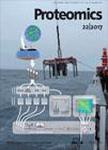版权所有:内蒙古大学图书馆 技术提供:维普资讯• 智图
内蒙古自治区呼和浩特市赛罕区大学西街235号 邮编: 010021

作者机构:Univ Michigan Sch Med Dept Pediat Ann Arbor MI 48109 USA
出 版 物:《PROTEOMICS》 (蛋白质组学)
年 卷 期:2001年第1卷第10期
页 面:1279-1287页
核心收录:
学科分类:0710[理学-生物学] 08[工学] 09[农学] 0901[农学-作物学] 0836[工学-生物工程] 090102[农学-作物遗传育种]
主 题:microarray technology lung adenocarcinorna cell lysates rotofor fractions
摘 要:A novel proteomic approach for probing cell and tissue proteome, which combines liquid phase protein separations with microarray technology has been developed. Proteins in cell and tissue lysates or in cellular subfractions are separated using any one of a number of separation modes which may consist of ion exchange liquid chromatography (LC), reverse phase LC, carrier ampholyte based separations, e.g. the use of Rotofor, affinity based separations, or gel based separations. Each first-dimension fraction obtained using one separation mode can be further resolved using one or more of the other separation modes to yield either purified protein in solution or liquid fractions with substantially reduced protein complexity. The advantage of a liquid based separation system is that proteins in hundreds of individual fractions can be arrayed directly and used as targets for a variety of probes. Constituent proteins in reactive fractions are identified by mass spectrometry and may be further resolved to determine the nature of the reactive protein(s). We present in this report initial data based on microarray analysis of individual Rotofor fractions obtained from lung adenocarcinoma cell line A549 lysates which have been probed with antibodies against specific proteins.